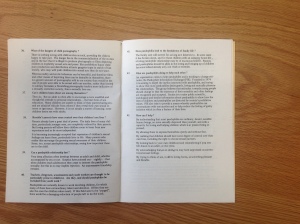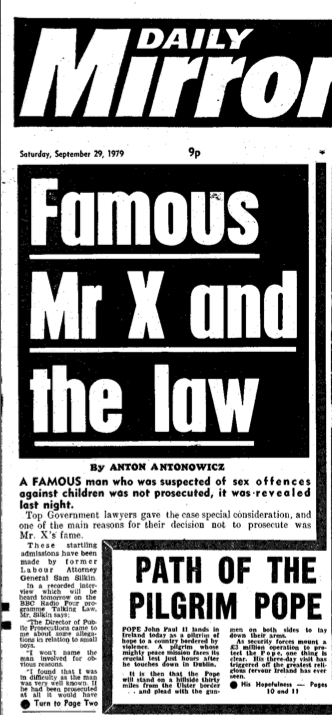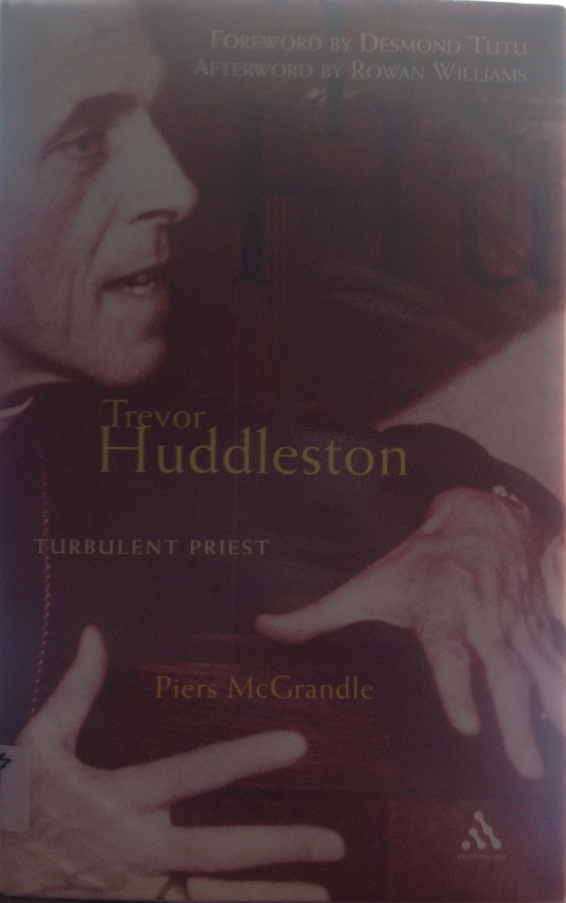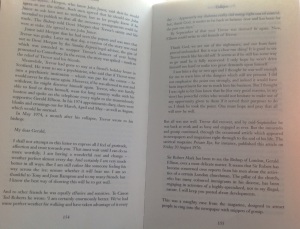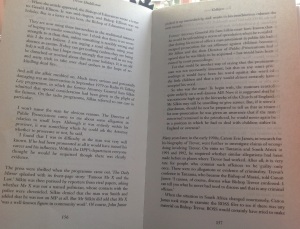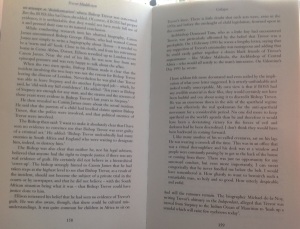Who was ‘John’, Albany Trust’s representative, on the Paedophile Drafting Committee?
Sir Harold Haywood, the Albany Trust and PIE: Some questions, few answers on ‘Paedophilia: Some Questions and Answers’?
BBC Radio 4 – Last Word- Obituary programme 17th June 2010
Known to many as simply ‘H’, Prince Charles’ trusted charity aide Sir Harold Haywood (1923 – 2010) first made headlines for his 1964 intervention on Brighton beach in the clash between mods and rockers[i]. He would later become known for giving Prince Charles an unannounced ‘plainclothes’ tour of charities dealing with runaways and homeless shelters in London’s redlight district of Soho in 1985. For almost twenty years he occupied one of the top positions at the National Association of Youth Clubs, first leading as Education and Training Director, and then Director of Youth Work. Under his Directorship from 1955-1974, Sir Angus Ogilvy, husband of Princess Alexandra was appointed President, with Jimmy Savile as Vice-President; a slew of celebrity attended fundraising events were organized, new headquarters were built on premises at Devonshire Street and membership swelled to 600,000. In 1973 his services to youth work earned him an O.B.E.
-
Police cover up Jimmy Savile’s claims to be friends with …
2 Feb 2014 – Sir Angus Ogilvy, Princess Alexandra’s husband (left) with Jimmy Savile. All mention of the former DJ’s claims to friendship with the royal was …
-
Police ‘censored’ 2009 interview with Jimmy Savile so it…
http://www.dailymail.co.uk/…/Jimmy-Savile-Police-censored-2009-interview-r…
20 Oct 2013 – Calls for Jimmy Savile to be probed over murder of girl, 13,. … the Surrey school – where it is said he abused girls – with Princess Alexandra.
-
Police blacked out talk of Jimmy Savile’s Princess pal …
http://www.dailystar.co.uk › News › Latest News
2 Feb 2014 – POLICE covered up Jimmy Savile’s claims to be a friend of the … told the two female detectives: “…right I went there, with Princess Alexandra, …
-
Royal cover up: Police censor Jimmy Savile interview …
http://www.dailystar.co.uk › News › Latest News
20 Oct 2013 – PAEDOPHILE Jimmy Savile named the royal family in his … he was said to have abused girls was with Princess Alexandra for a garden party”.
Three years later Haywood was appointed Director of the Jubilee Trusts, consolidating these to form the Prince’s Trust for young people, resident at offices at No.8 Buckingham Walk from late 1977. As a close and trusted aide to Prince Charles, he earned a knighthood in 1988. Who’s Who and the Oxford National Biographies list a range of appointments Haywood would take on post-retirement during the eighties.
But something not written about in either of those is his time spent as Chairman of Albany Trust…
From 1974 to 1977 Haywood is noted for serving as General Secretary of the Educational Interchange Council, advising India, Australia, and Singapore on establishing youth clubs. However, during that time as Chairman of Albany Trust he also coaxed into existence a booklet entitled Paedophilia: Some Questions and Answers along with fellow Albany Trustees, members of the Paedophile Information Exchange (PIE’s Keith Hose and Tom O’Carroll) and the Paedophile Action League (PAL).
“The trust also proposed to publish a pamphlet about paedophiles which stated that they “represent no special threat to society”. It was abandoned after Angela Willans, a trustee who was the Woman’s Own agony aunt, saw a draft and branded it monstrous.” [The Times, July 22nd, 2014 Dominic Kennedy, ‘Trust head helped edit book about sex with boys’]
One of the Booklet’s stated aims was to argue for the positive social benefits paedophiles brought to society:
“In the belief that knowledge dispels prejudice, this booklet sets out to answer the commonest questions and suppositions about paedophilia, and to argue that those involved represent no special threat to society, but on the contrary are often a force for social good.” (my emphasis)
Harold Haywood’s alterations to the March 1977 re-draft of the Introduction to the Booklet (transcribed from above):
“This has to be ‘by’ someone, or a group, and it should be made clear they are homosexual paedophiles if only to explain what might be called the peculiarities of the document
(2) Such people are unlikely to read this booklet, or if they do, will read it only in search of fuel to stoke the furnaces of their hatred.
This has not been written for them, but for those who find would like to understand paedophile relationships better worrying, and would like to understand them better. As paedophiles we ought to be able to do this.”[i]
The implicit threat along with the booklet’s assertion that paedophiles were a force for social good was the conversely terrible implications of a paedophile strike or withdrawal of services to all youth provided by schools, churches, scouts, even youth organizations like the National Association of Youth Clubs and their workers. The confidence of paedophile lobbyists in their belief that high levels of employee and volunteer paedophiles working in the sector could be mobilized was hinted at defensively in Question 40:
“Qn. 40: Teachers, clergymen, scoutmasters and youth workers are thought to be particularly prone to child-love. Are they, and should paedophiles be excluded from youth work?
Paedophiles are naturally drawn to work involving children, for which many of them have extraordinary talent and devotion. (Often they are also the ones the children value most). If this field were to be “purged”, there would be a damaging reduction of people left to do the work.”
As a keen scoutmaster and professional youth worker for his entire career, Haywood’s views on this Q&A in particular would have been useful.
Antony Grey partially relates Haywood’s involvement in his 1992 book Quest for Justice: Towards homosexual emancipation. The project caused a storm in the press when Mary Whitehouse got wind of the meetings arranged between the three organizations in order to discuss content and audience for the booklet. Grey both ridiculed and dismissed concerns by making it a matter of whether Whitehouse begrudged the Trust giving paedophiles a ‘few cups of tea’ and in December 1976 accusations of supporting or funding paedophiles either directly or indirectly were denied by the Albany Trust in a recorded letter by Haywood to Whitehouse. More recently the Trust has stated on its website:[ii]
“Albany Trust has never supported the organisation known as P.I.E. financially, nor in support of its misguided ideology. Nor has Albany Trust ever associated itself in any way with P.I.E. in the past. For the sake of clarity, Albany Trust wishes to make it clear it entirely dissociates itself from any organisation promoting the sexual abuse of children.”
I wonder if a better question is whether the Albany Society Ltd supported PIE financially as the grant-giving corporate arm/treasury of Albany Trust and a distinct legal entity? [More on Ian Dunn, 12 months prior to co-founding PIE joining the Albany Society’s Council of Management here with Antony Grey as Secretary and Chairman David Kerr MP formerly Lab: Wandsworth Central 1964 – 1970)
The Q&A booklet was eventually published by PIE alone, a year after a falling-out amongst Albany trustees on a fateful weekend in March 1977 after which Grey resigned from the Trust a second time. In April 1978 PIE decided to print and send copies free of charge to MPs amidst garnering support from NCCL to lobby for a dilution of the Protection of Children Act.
This A5 booklet is what each MP received.
‘NCCL’s official response, signed by Miss Harman and submitted in April 1978, claimed that the new law could lead to “damaging and absurd prosecutions” and “increase censorship”.
She suggested that a pornographic photo or film of a child should not be considered indecent unless it could be shown that the subject had suffered, and that prosecutors would have to prove harm rather than defendants having to justify themselves.
Her submission states: “Although this harm may be of a somewhat speculative nature, where participation falls short of physical assault, it is none-the-less justifiable to restrain activities by photographer which involve placing children under the age of 14 (or, arguably, 16) in sexual situations.
“We suggest that the term ‘indecent’ be qualified as follows: – A photograph or film shall not for this purpose be considered indecent (a) by reason only that the model is in a state of undress (whether complete or partial); (b) unless it is proved or is to be inferred from the photograph or film that the making of the photograph or film might reasonably be expected to have caused the model physical harm or pronounced psychological or emotional disorder.”
It adds: “Our amendment places the onus of proof on the prosecution to show that the child was actually harmed.”’ [The Telegraph, Martin Beckford, Harriet Harman under attack over bid to water down child pornography law, 9 March 2009]
Who was ‘John’ the Albany Trust representative on the Paedophile Drafting Committee?
In October 1976 the Trust’s ‘Any other business’ included (a) pedophile Pamphlet Haywood encourages the Trust to progress with publishing the ‘final version’ of the Booklet:
“The first draft of a Questions and Answers booklet on pedophilia, written by pedophiles, was made available to Trustees to read, for discussion at the next meeting. The Chairman expressed the hope that Trustees would want to published the final version as a Trust contribution to discussion in an emotionally charged area.“
“A drafting committee” [‘Of which I was not a member’ states Grey most emphatically in his footnotes, yet coyly omits to say who was], “produced a text, but the Trustees could not agree on it, so the project was dropped.”[i] Tom O’Carroll states on a self-drafted biography on the internet:
“1978: Paedophilia: Some Questions and Answers. Authored jointly with Keith Hose, former PIE Chair, and “John”, a nominee of the partly government-funded Albany Trust, which commissioned the work but withdrew from publishing it after coming under attack from socially conservative campaigner Mary Whitehouse. This booklet was distributed by PIE to every Member of Parliament.” http://www.williamapercy.com/wiki/index.php?title=Tom_O’Carroll_Biography
[i] Quest for Justice: Toward Homosexual Emancipation, Antony Grey, Loc 4016/6001 – also see Fn.6
“Harold Haywood, Antony Grey and Rodney Bennett-England had held further meetings with the paedophiles who were drafting a “Questions and Answers” booklet. A revised version of this would be circulated to all Trustees well before the next Trustees’ meeting. Harold Haywood asked all Trustees to send him their written comments, as a decision would need to be taken at the next meeting as to whether the trust should sponsor production of the booklet. Antony Grey said he had been telephoned that morning by the Press Association about a luncheon speech being given by Mrs Mary Whitehouse attacking thr Trust for using taxpayers’ money to seek the ‘normalisation’ of sexual activity between adults and children, and for employing ‘Youth Counsellors’ who wrote for pornographic magazines. He had telephoned Mrs Whitehouse’s office, requesting the full text of her speech.” [Albany Trust minutes, 26 November 1976]
Rodney Bennett-England was another Trustee at the time and would become Director of the National Union of Journalism Training.
Placed in context of news reports at the time, asking who the Albany Trust’s ‘nominated’ co-drafter on the Q&A Booklet was and why it was drafted, also raises wider questions about two events which made national headlines during the summer of 1975: (1) The conviction of Charles Hornby at the Piccadilly Playland Amusement Arcade Trial and (2) Johnny-Go-Home, an ITV documentary about runaway boys.
Playland Trial No. 2: Harold Haywood joins Albany Trust as Chairman and the fightback begins
A drafting frenzy: Albany Trust, PIE, PAL, NCCL and the autumn of the PIE Manifesto, PIE Submission to CLRC on Sexual Offences and the start of ‘Paedophilia: Some Questions and Answers’ (a booklet provided free to MPs)
In 1975, Scotland Yard carried out a high-profile child abuse investigation which centred on the Playland amusement arcade near Piccadilly Circus, and involved the sexual exploitation of homeless boys. The investigation led to five convictions in September 1975. Four of the men convicted were ‘nobodies’, but one – Charles Hornby – was a pillar of the Establishment. He was a wealthy socialite, a Lloyd’s underwriter, and an old Etonian, “who on occasion had Prince Charles among his dinner guests”.
The four ‘nobodies’ later had their sentences reduced in mysterious circumstances. One of them, David Archer, alleged that Hornby was far from being the only VIP involved in the Playland scandal.
Last night Archer said he would present the police with a dossier naming the ‘millionaires and titled and influential people’ involved in the Playland affair. He added: ‘I believe there was a tremendous cover-up to protect these people.’ [Spotlight on Abuse: The Playland Cover-Up]
The Playland Arcade was located on Coventry Street, a 3 minute walk around what is now the Trocadero, from the Albany Trust’s former offices at 32 Shaftesbury Avenue.
It was a few weeks before Hornby and his Playland co-defendants were sentenced that a MIND seminar[i] on sexual minorities and their problems took place on the first weekend in September 1975. Organised by fellow Albany trustee and former NCCL General Secretary, Tony Smythe, and chaired by the pervasive Peter Righton, at the Polytechnic of Central London, Marylebone Road, fellow Albany Trustees Antony Grey and future Prince’s Trust for Young People Director Harold Haywood met Keith Hose, the Chairman of the Paedophile Information Exchange.
Top men face charges in vice net round-up (21.09.75) News of the World
Keith had stepped into the role of Chairman and Treasurer of PIE that June[ii], and was concurrently serving as a member of the NCCL Gay Rights Committee (GCR). Through this committee he would have known Nettie Pollard, fellow PIE member, who in her role as gay rights organizer for the NCCL sat on the NCCL GCR too and was scheduled to speak at the workshop.
At the MIND Sexual Minorities workshop, Harold Haywood heard Keith Hose speak, (NCCL Gay Rights Committee member and concurrently serving as the first PIE Chairman and Treasurer for the previous six months), PIE member Nettie Pollard present alongside Rose Robertson (Parents’ Enquiry and Albany Society Ltd Council of Management Ordinary Member) and Jack Babuscio, a writer, while Mickey Burbidge of Icebreakers, an enthusiastic co-drafter of PIE’s CLRC submission with Keith Hose, also spoke alongside Glenys Parry about what helpers could hope to do.
Six months previously Nettie had already strengthened the informal associations between PIE, PAL and the NCCL by inviting them to affiliate [iii], and her reminder to PIE with regard to affiliate voting rights had been reprinted in PIE Newsletter No. 6, ensuring Keith felt confident he was speaking to a seminar amongst friends.
“You would be able to vote for our Executive Committee, and, perhaps most important, you would be able to propose resolutions to our Annual General Meeting and have 2 votes.”
(On which the PIE News editor felt bound to comment, “Needless to say we would also have the council’s total support.”)
Certainly Harold Haywood’s own response to Keith was extremely sympathetic, as Grey recounts:
“Afterwards, Mr Haywood said to me that this of all sexual minorities was the most execrated and doom-laden, and that the Trust had a moral duty to see whether anything could be done to help those who carried this heavy burden to live more at peace with themselves.”[v]
Sir Harold Haywood unites the Albany Trustees to ask ‘Who is exploiting whom?’
If the problem is viewed as runaway boys ‘exploiting’ ‘millionaires and titled and influential people’, what would be the solution?
During September Keith Hose (PIE) and Mickey Burbidge (Icebreakers) worked together to draft PIE’s Manifesto and the PIE submission to the Criminal Law Revision Committee on Sexual Offences, also sent to the NCCL.
A drafting committee was also underway at Albany Trust offices, SW1. Work had started in earnest during 1976 for PIE, PAL, and the Albany Trust to jointly draft and publish a booklet ‘ Paedophilia: Some Questions and Answers’ in which to explain the paedophile’s predicament.
Encouraged by Haywood’s demand for empathy and his declaration that there existed a moral imperative for the Trust to assist pedophiles after having met with four or five PIE members at the MIND Sexual Minorities workshop, Grey began to set about organizing various private meetings at the Trust offices, inviting psychiatrists, psychologists and paedophiles, including members of PIE and PAL.
Haywood had a reputation as a formidable organiser and commander of celebrities. As a Methodist lay preacher and scout master, qualified as a Youth Worker from St John’s Club in Sheffield for 10 years already, Haywood had contributed to a series of pamphlets called Pep up your Programme, designed with the Youth Club leader in mind, suggesting a tape recorder as a useful piece of equipment to garner feedback. Under his Directorship of Youth Work the National Association of Youth Clubs had moved into completely new state of the art headquarters on their site at Devonshire Street, their membership grew to 600,000 and during the 60s and 70s their fundraising efforts attracted the celebrity support of Cliff Richard, Rolf Harris and Jimmy Savile. Savile had also become involved with the NAYC 1957 offshoot PHAB (Physically Handicapped and Able Bodied), becoming their Honorary President from 1974 – 1988, when it was first established as an independent charity. He ran many marathons for them and appeared with ex-Cardinal Keith O’Brien on the donation of a £375,000 vehicle for PHAB trips. However in 1974, cuts were made and Devonshire Street House was sold and activities scaled back despite Haywood receiving an OBE for his services to youth work. While Haywood may have lost his NAYC empire, he was keen to start again with Grey at his side.
“…I arranged for a few private discussions to be held at the Trust’s offices between psychiatrists, psychologists and social workers whom I knew to be concerned with paedophiles in their professional work, to explore with them the nature and availability of support needed. I also invited some paedophiles to join in these talks, including the young man who had spoken at the MIND conference and other members of the newly-formed (and ill-fated) Paedophile Information Exchange (PIE) and another group, PAL (Paedophile Action for Liberation) [Grey, Loc ]
Reading of Hornby’s involvement with exploiting runaways, and his desperate and damning attempts to bribe boys to change their evidence, and his subsequent prison sentence served to unite the Albany Trustees, Rodney Bennett-England, Lucille Butler (RAB’s daughter-in-law, RAB being Lord Butler – former Deputy Prime Minister to Macmillan and Home Secretary when Sir Ian Horobin MP was prosecuted for sexual offences against boys in 1962), Rev. Michael Butler, Antony Grey, Harold Haywood and Tony Smythe in empathy for Hornby’s cause.
A week after the News of the World’s headline threatening Top Men face charges in vice-net round-up, together the six wrote to The Guardian,
“as Trustees of an agency concerned with psychological health, youth welfare, and a better understanding of sexuality we hope no-one believes that teenage male prostitution can be eradicated by hefty prison sentences or television programmes like Johnny Go Home.”
“The most pathetic aspect of the recent “vice trial” was its revelation of the double life and self-deception which society still forces upon the bisexual man and the sexually active adolescent.
In this situation it must be asked, who is exploiting whom? And how can such exploitation be reduced?”
[‘Runaway Problem’ Letter to the Guardian, 27 September 1975 signed Rodney Bennett-England, Lucille Butler, Michael Butler, Antony Grey, Harold Haywood, Tony Smythe, Albany Trustees]
Although press reports suggested Hornby had been observed four times between June 1973 – January 1975 , later residents of Hornby’s W1 townhouse in Montagu Square would hear that it was a boy Scout who went to the police to report him, reportedly leading Lady Charlotte Bonham-Carter on hearing Hornby had been betrayed “Those terrible, terrible boy-scouts, they should be disbanded!”[p.323 Becoming a Londoner: A Diary (September 2013) David Plante]
The trustees’ addition of ‘youth welfare’ in their Guardian letter suggests a new extended charitable objective for 1975 and a refocus of the Trust’s target demographics for psychosexual counseling. The tustees also appeared to suggest that society’s intolerance of married pederasts was forcing hapless men seeking to purchase and exploit teenage boys into a situation whereby themselves being becoming vulnerable to exploitation – by raising the spectre of blackmail by the ‘sexually active adolescent’. One of the boys in Johnny Go Home was 10. If Albany Trustees were acting out of concern for rich and privileged clients seeking counselling who were also possibly victims of blackmail by any of the five Playland pimps, or the children, teenagers and younger, they paid to abuse, the news reports a year later would add weight to their concern.
In November 1976 a remarkable reversal of fortune took place for the Playland four. Hornby’s co-defendants, found guilty and sentenced, were to have their convictions either quashed or sentences reduced in the wake of David Archer’s dossier threats.
Archer, a plumber from Forest Gate who’d received five and a half years had his conviction for an unnatural act and indecency and his sentence set aside by three Court of Appeal judges. Only the Daily Mail reported,
“Last night Archer said he would present the police with a dossier naming ‘millionaires and titled and influential people’ involved in the Playland affair. He added, ‘I believe there was a tremendous cover-up to protect these people.’”[Playland Vice Case Man Freed, Daily Mail, 30th November 1976]
Forty years ago, in a headline that is becoming ever more familiar in its refrain day by day: 1975: “Dozens of arrests are expected” after Playland file passed to DPP, but nobody else was charged
On 21 October 1977 The Times announced Harold Haywood would be appointed Director of the Queen’s Silver Jubilee Trust, helping to raise over £16m for ‘disadvantaged youth’ at the Queen’s behest, before moving on as Director of the Prince’s Trust for young people.
[i] Grey Loc 4016/6001
[i] MIND Sexual Minorities: A Workshop, 5th & 6th September 1975
[ii] PIE Newsletter (No. 6) 1975
[iii] PIE Newsletter No 6 (August 1975): States Nettie Pollard’s letter inviting affiliation was dated 13 May 1975
[v] Quest for Justice: Towards homosexual emancipation, Antony Grey [Loc 4011/6001]
6 December 1976: Angela Willans (new Albany Trustee, agony aunt to Woman’s Own since 1963) to Harold Haywood with her comments on the Q&A draft circulated by Antony Grey.
Oxford DNB Biography entry by Jonathan Powers
Haywood, Sir Harold (1923–2010), youth worker and charity administrator, was born on 30 September 1923 at The Finsbury Nursing Home, Shobnall Street, Burton upon Trent, the only son and eldest of three children of Harold Haywood (1903–1988) and his wife, Lilian Mary, née Barratt (1904–1929). At the time of his birth registration his parents lived at 225 Stafford Street, Burton upon Trent. His father was a brewery worker, like his father before him, but Haywood proved to be an avid reader and an aspiring school actor, developing a gift for inspiring and communicating with young people, and showing prodigious energy as an organizer. Educated at the Guild Central School in Burton upon Trent, he briefly joined the Royal Navy, but was given a medical discharge in 1943. He then worked as a hospital attendant. On 1 January 1944, at Victoria Street Methodist Church, Burton upon Trent, he married Amy Richardson (1917–2005), a machinist at a local shoe factory, and daughter of Charles William Richardson, brewery foreman. Though they had no natural children, there were four people proud to own themselves their fostered or adopted sons: Clifford Wall, Colin Stone, Nicholas Haywood, and Paul Haywood (who predeceased them).
Haywood (often known simply as ‘H’) became an accredited Methodist preacher in 1946 and was so entertaining that later he was dubbed ‘the Ken Dodd of the Pulpit’. Trained for youth work at Westhill College of Education in Selly Oak, Birmingham, obtaining a certificate in education in 1948, he was appointed youth leader at St John’s Methodist Church in Sheffield. ‘Hurricane Harold’ and ‘Mrs H.’ had a transformative effect as the initially controversial St John’s Clubland became an exemplar of the ideal youth club. In 1951 Westhill College recruited him back as a tutor. In 1954 he became regional organizer for the Methodist Youth Department, and the following year director of education and training for the National Association of Youth Clubs (NAYC). In May 1964 (his first year as British national chairman of the World Assembly of Youth) he came to public attention when he intervened in the riots between ‘mods’ and ‘rockers’ on Brighton beach. These two youth subcultures of the 1960s were implacably opposed to, and openly contemptuous of, one another. One observer remarked, ‘It was amazing. This fearless chap arrived and actually started talking to the hooligans—and they listened to him’ (Revd Peter Dawson, memorial service eulogy). From 1966 to 1974 he was director of youth work at the NAYC, serving on the home secretary’s advisory committee on the misuse of drugs from 1970 to 1975. He was appointed OBE in 1974.
From 1974 to 1977 Haywood served as general secretary of the Educational Interchange Council. He advised India, Australia, and Singapore on setting up youth clubs. Then in 1977 he was appointed director of the Royal Jubilee Trust, raising £15 million to help disadvantaged young people, and subsequently became director of the Prince’s Trust until 1988. The prince of Wales later wrote that ‘without his support, commitment and enthusiasm, The Prince’s Trust would not be where it is today’ (memorial service eulogy). He was appointed a deputy lieutenant for Greater London in 1983, and in 1985 famously took the prince of Wales on an unannounced, ‘plain-clothes’, night-time visit to London’s Centrepoint hostel and charities in Soho, so he could see the plight of young homeless people for himself.
After his retirement in 1988 Haywood was appointed KCVO. However, his ‘retirement’ was marked by a plethora of activities. He served as chairman of the Association of Charitable Foundations (1989–92), the YMCA (1989–93), the BBC/ITC central appeals advisory committee (1989–97), and the Grants Council of the Charities Aid Foundation (1989–97). He also assumed a number of honorary positions, becoming vice-president of the Commonwealth Youth Exchange Council (1988), patron of Kids International UK (1994), and vice-president of the London International Youth Science Forum (2008). He bought a thatched house in Oakwood, Derby, becoming vice-president of the Derby Community Foundation (1998), and president of the local Royal British Legion branch (2000).
There was still time for one last major project and from 1999 to 2001 Haywood was chairman of the fund-raising campaign to build the Multi-Faith Centre at the University of Derby. After the £2 million needed had been raised, he donned a hard hat to join fourteen primary school children from seven faith communities laying the foundation stone in 2003. He was made honorary vice-president, but by the official opening in 2005 he was becoming frail, attending in a wheelchair. His wife died in 2005 and he moved into care, finally dying of prostate cancer and renal failure on 23 May 2010 at The Laurels Nursing Home, 77 Nottingham Road, Spondon, Derby. He was cremated on 7 June at Markeaton crematorium, and a multi-faith memorial service was held at the centre on 24 July 2010; Lord Remnant represented the prince of Wales. Afterwards four young people who had helped lay the foundation stone unveiled a memorial bench in the roof garden.
Jonathan Powers
Aid for young in difficulty – Focus on The Prince’s Trust
It operates throughout the United Kingdom and local committees in Scotland, Wales and Northern Ireland, and in most areas of England.
The number of local committees has grown from an initial 12 to 42, and the last remaining gaps are in rural countries of central and southern England.
The Prince’s Trust has only one paid employee, the headquarters’ secretary. The administrator, Dr Bill Smith, is on secondment from ICI where he was a section manager in production; his assistant is seconded from the National Westminster Bank.
About 850 people are volunteer members of the 42 local committees. Typically they include people from the churches, probation services, police, youth workers, professional people, representatives from commerce and industry and a number of young people.
The bulk of the trust’s income comes from film previews, gala performances and pop concerts attended by the Prince of Wales. Further contributions are raised by the headquarters staff of three from private individuals and from companies.
At the express wish of the Prince himself the trust spends its money almost as quickly as it is raised. The current reserve is seldom more than pounds 100,000. Annual turnover is more than pounds 300,000 and likely to reach pounds 500,000. Only 8 per cent of income goes in overheads.
The money is dispensed by the local committee which receive applications only from individual young people, or from small ad hoc groups needing help for specific purposes. The maximum grants are of pounds 300 to an individual, or pounds 500 to a group project.
Committee members always visit applicants to investigate their needs, and the trust believes that help and advice given at these meetings is often as helpful as the money itself. About 2,000 grants are made annually.
The trust also organizes annual Prince’s Trust camps for up to 600 young unemployed people. Last year 250 spent a fortnight at Maiden Castle helping to repair the earthwork fortress.











